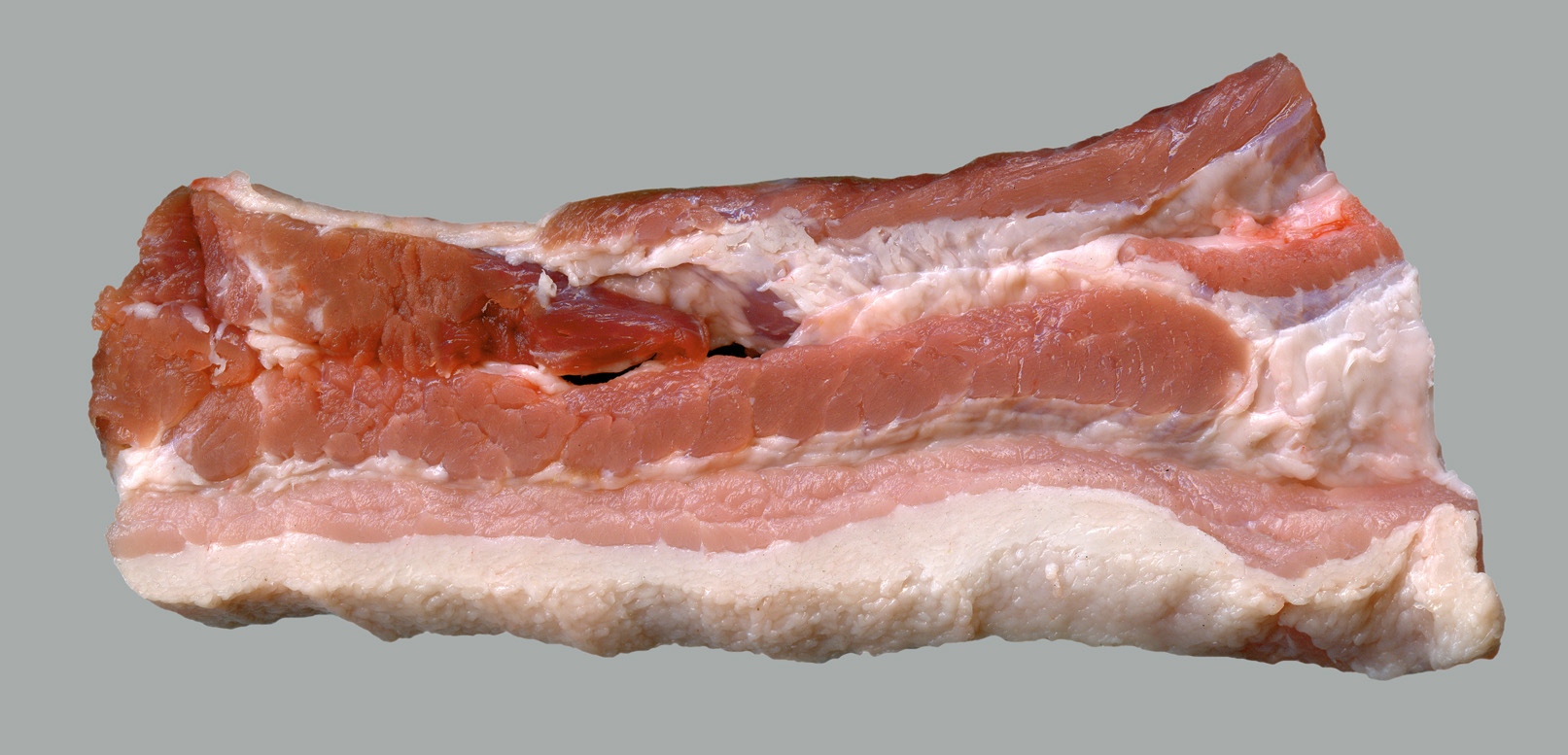|
Käsekrainer
Käsekrainer () is a type of lightly smoked Brühwurst containing roughly torn bits of pork and 10% to 20% cheese (for example Emmentaler) cut into small cubes. They are sold all over Austria at Würstelstand outlets. It is a variety of Carniolan sausage. Käsekrainer was invented by two people from Upper Austria, chef Herbert Schuch from Buchkirchen and Franz Thalhammer in the late 1960s. Preparation and variants Käsekrainer can be cooked, roasted or grilled. The original Käsekrainer is served with mustard (condiment), mustard and freshly cut horseradish, other varieties with mustard and ketchup, optionally sprinkled with curry powder. A popular dish is the Käsekrainer hot dog, where a Käsekrainer is served in a hollow piece of white bread with mustard or ketchup. The Käsekrainer Bosna (sausage), Bosna sandwich, resembling a sandwich, is known as a "Kafka" in the Linz area. Käsekrainer should not be confused with the Berner sausage, a Vienna sausage (Austrian German: ''Fr ... [...More Info...] [...Related Items...] OR: [Wikipedia] [Google] [Baidu] |
Carniolan Sausage
The Carniolan sausage (, , , , Italian dialect of Trieste: ''luganighe de Cragno'') is a Slovenian parboiled sausage similar to what is known as kielbasa or Polish sausage in North America. The noun ''klobasa'' refers to a small sausage generally served whole (in contrast to ''salama'') in Slovene. The adjective ''kranjska'' derives from the region of Carniola (''Kranjska'' in Slovene, ''Krain'' in German), which used to be a duchy of the Austrian Empire. The earliest mention of the Carniolan sausage in German is found in Katharina Prato's renowned cookbook ''Süddeutsche Küche'' (South German Cooking, 1896, first edition 1858). The Slovene term ''kranjska klobasa'' was first mentioned in the sixth edition of ''Slovenska kuharica'' (Slovene Cookbook) by Felicita Kalinšek in 1912. The Carniolan sausage contains at least 75 to 80% pork (aside from bacon) and at most 20% bacon. It may contain as much as 5% water, the sea salt from Sečovlje salt pans, little garlic, saltpet ... [...More Info...] [...Related Items...] OR: [Wikipedia] [Google] [Baidu] |
Buchkirchen
Buchkirchen is a municipality in the district of Wels-Land in the Austrian state of Upper Austria. Geography Buchkirchen lies in the Hausruckviertel. About 10.9% of the municipality is forest, and 76.9% is farmland. Parts of Buchkirchen Those parts are called ''Ortschaften'' in German: Buchkirchen, Elend, Ennsberg, Epping, Hörling, Haberfelden, Hartberg, Hochscharten, Holzwiesen, Hundsham, Hupfau, Kandlberg, Lachgraben, Luckermair, Mistelbach bei Wels, Niedergrafing, Niederhocherenz, Niederlaab, Obergrafing, Oberhocherenz, Oberperwend, Oberprisching, Ottenham, Radlach, Öhnerhäuser, Ötzing, Schickenhäuser, Schnadt, Sommerfeld, Spengenedt, Unterholz, Wörist, Wolfsgrub. History In 1179 Buchkirchen was mentioned in a document of Pope Alexander III. In those years Buchkirchen was named as "Puechkirchen". In the late 1960s, the two chefs, Herbert Schuh and Franz Thalhammer, invented the Austrian dish Käsekrainer in Buchkirchen. Since then, the sausage has been well establishe ... [...More Info...] [...Related Items...] OR: [Wikipedia] [Google] [Baidu] |
Vienna
Vienna ( ; ; ) is the capital city, capital, List of largest cities in Austria, most populous city, and one of Federal states of Austria, nine federal states of Austria. It is Austria's primate city, with just over two million inhabitants. Its larger metropolitan area has a population of nearly 2.9 million, representing nearly one-third of the country's population. Vienna is the Culture of Austria, cultural, Economy of Austria, economic, and Politics of Austria, political center of the country, the List of cities in the European Union by population within city limits, fifth-largest city by population in the European Union, and the most-populous of the List of cities and towns on the river Danube, cities on the river Danube. The city lies on the eastern edge of the Vienna Woods (''Wienerwald''), the northeasternmost foothills of the Alps, that separate Vienna from the more western parts of Austria, at the transition to the Pannonian Basin. It sits on the Danube, and is ... [...More Info...] [...Related Items...] OR: [Wikipedia] [Google] [Baidu] |
Brühwurst
''Brühwurst'' ("scalded sausage" or "parboiled sausage") is the collective name for several types of sausages according to the German classification. They are a cooked sausage that are scalded (parboiled), as opposed to being raw. They are typically prepared from raw meat that is finely chopped, are sometimes smoked, and are typically served hot. In the English-speaking world such sausages are usually divided into two classes: cooked sausages (e.g. hot dogs) and cooked smoked sausages (e.g. kielbasa). Characteristics and processing The consistency of a scalded sausage depends on the water binding capacity of the meat. This is particularly high immediately after slaughter, so that sausages were traditionally made from "still warm, freshly slaughtered" meat. In contemporary times, sausages are mainly produced using chilled or matured meat. In addition, fat stabilization and structure formation (gelation) are crucial factors in cooked sausage. Types According to German gu ... [...More Info...] [...Related Items...] OR: [Wikipedia] [Google] [Baidu] |
Bosna (sausage)
Bosna is a spicy Austrian fast food dish, said to have originated in Salzburg. It is believed to have been invented in 1949 by a man named Zanko Todoroff. It is now popular all over western Austria and southern Bavaria. It resembles a hot dog, consisting mainly of a Bratwurst sausage, onions and a blend of mustard and/or tomato ketchup and curry powder ( Curry ketchup). Bosna is made with white bread and is usually grilled briefly before serving. Variations Several variations of the dish exist: * ''Kleine Bosna'' (small bosna), with only one sausage * ''Große Bosna'' (large bosna), with two sausages * ''Kafka'' (named after Franz Kafka, ''Käsekrainer Käsekrainer () is a type of lightly smoked Brühwurst containing roughly torn bits of pork and 10% to 20% cheese (for example Emmentaler) cut into small cubes. They are sold all over Austria at Würstelstand outlets. It is a variety of Carniolan ... Bosna''), with a different sausage type; generally a sausage with a dif ... [...More Info...] [...Related Items...] OR: [Wikipedia] [Google] [Baidu] |
Würstelstand
A ''Würstelstand'' (literally "sausage stand"; plural ''Würstelstände'') is a traditional Austrian street food retail outlet selling hot dogs, sausages, and side dishes. They are a ubiquitous sight in Vienna. History ''Würstelstände'' were initially movable stalls created during the period of the Austro-Hungarian Empire to provide a source of income for disabled veterans. Not until the 1960s were the sales stands allowed to become stationary. Especially in Vienna's inner city, many of them can be found near transit hubs and around subway stations, providing a late evening catering for night owls. In some Austrian cities, mobile ''Würstelstände'' hold operating licenses only for nighttime sales. Culture Especially the original Viennese ''Würstelstände'' have cultivated their own terms for certain products, deeply rooted in the regional dialect and its tradition for dark, bittersweet humor. Here are some prominent examples: * "a Eitrige mit an Bugl" (a purulent with a hum ... [...More Info...] [...Related Items...] OR: [Wikipedia] [Google] [Baidu] |
Bacon
Bacon is a type of Curing (food preservation), salt-cured pork made from various cuts of meat, cuts, typically the pork belly, belly or less fatty parts of the back. It is eaten as a side dish (particularly in breakfasts), used as a central ingredient (e.g., the BLT, BLT sandwich), or as a flavouring or accent. Regular bacon consumption is associated with increased mortality and other health concerns. Bacon is also used for #Bacon fat, barding and larding roasts, especially game, including venison and pheasant, and may also be used to insulate or flavour roast joints by being layered onto the meat. The word is derived from the Proto-Germanic , meaning . Meat from other animals, such as beef, Lamb and mutton, lamb, chicken (food), chicken, goat meat, goat, or turkey meat, turkey, may also be cut, cured, or otherwise prepared to resemble bacon, and may even be referred to as, for example, "turkey bacon". Such use is common in areas with significant Kashrut, Jewish and Islamic ... [...More Info...] [...Related Items...] OR: [Wikipedia] [Google] [Baidu] |
German Language
German (, ) is a West Germanic language in the Indo-European language family, mainly spoken in Western Europe, Western and Central Europe. It is the majority and Official language, official (or co-official) language in Germany, Austria, Switzerland, and Liechtenstein. It is also an official language of Luxembourg, German-speaking Community of Belgium, Belgium and the Italian autonomous province of South Tyrol, as well as a recognized national language in Namibia. There are also notable German-speaking communities in other parts of Europe, including: Poland (Upper Silesia), the Czech Republic (North Bohemia), Denmark (South Jutland County, North Schleswig), Slovakia (Krahule), Germans of Romania, Romania, Hungary (Sopron), and France (European Collectivity of Alsace, Alsace). Overseas, sizeable communities of German-speakers are found in the Americas. German is one of the global language system, major languages of the world, with nearly 80 million native speakers and over 130 mi ... [...More Info...] [...Related Items...] OR: [Wikipedia] [Google] [Baidu] |
Jennifer Rush
Jennifer Rush (born Heidi Stern; September 28, 1960) is an American pop and rock singer. She achieved initial success during the mid-1980s with several singles and studio albums, including the million-selling single " The Power of Love", which she co-wrote and released in 1984. Her initial greatest success came in Europe. Other successful singles from that period include " Ring of Ice", "Destiny", " I Come Undone", " You're My One and Only", " Higher Ground", " 25 Lovers", " If You're Ever Gonna Lose My Love", " Heart over Mind" and " Flames of Paradise", a duet with Elton John. In the 1990s she had several charting singles, including " Tears in the Rain". Early life Rush was born Heidi Stern in the New York City borough of Queens to Barbara and Maurice Stern. She has two older brothers, Robert "Bobby" Stern and Stephen Stern (both professional musicians), and a younger sister. Rush and her brothers lived with their mother until she was a toddler, and then with their father an ... [...More Info...] [...Related Items...] OR: [Wikipedia] [Google] [Baidu] |
Cacography
Cacography is bad spelling or bad handwriting. The term in the sense of "poor spelling, accentuation, and punctuation" is a semantic antonym to orthography, and in the sense of "poor handwriting" it is an etymological antonym to the word calligraphy: cacography is from Greek κακός (''kakos'' "bad") and γραφή (''graphe'' "writing"). Cacography is also deliberate comic misspelling, a type of humour similar to malapropism. A common usage of cacography is to caricature illiterate speakers, as with eye dialect spelling. Others include the use to indicate that something was written by a child, to indirectly voice a cute or funny animal in a meme such as the captioned photo of a British shorthair that was the namesake of I Can Has Cheezburger?, or because the misspelling bears a humorous resemblance to a completely unrelated word. See also * Satirical misspelling * Sensational spelling *Catachresis * Gaffe * Corruption (linguistics) *Eye dialect Eye dialect is a writer's ... [...More Info...] [...Related Items...] OR: [Wikipedia] [Google] [Baidu] |
Ottakringer
Ottakringer () is the last large brewery remaining in Vienna, Austria, and is located in Ottakring, the Districts of Vienna, 16th district of Vienna. History The Ottakringer brewery was opened in 1837 by the master miller Heinrich Plank under the name of ''Planksche Brauerei'', after the ruling diocese of Klosterneuburg had granted approval for brewing. In 1850, it was taken over and expanded into a large brewery by the cousins, Ignaz and Jakob Kuffner from Břeclav, Lundenburg. Within ten years, the production increased from 18,318 wikt:hectolitre, hl to 64,183 hl. When Kaiser Franz Joseph I of Austria, Franz Joseph ordered that the city walls be pulled down and a large number of residential buildings began to be built, Ottakringer grew as well. A new fermentation cellar and a larger warehouse went into operation. Around 1890, the production was already at about 170,000 hl. Moriz von Kuffner, the son of Ignaz von Kuffner, took over the brewery in 1882 and increased the productio ... [...More Info...] [...Related Items...] OR: [Wikipedia] [Google] [Baidu] |



